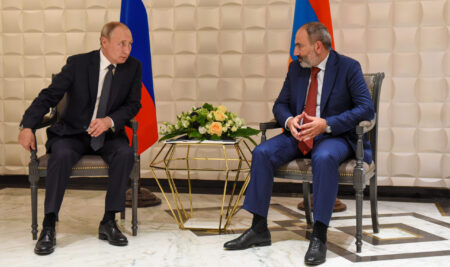Last month, with little coverage, the Special Inspector General for Operation Atlantic Resolve released its first quarterly oversight report of American aid to Ukraine.
Ukraine is entering its third year of war against Russia, and the United States has been there every step of the way with billions of dollars in weapons, military training, humanitarian aid, intended oversight, and more. Thus far, Congress has appropriated a staggering $113.4 billion for Ukraine aid.
Even as we sympathize with Ukraine’s defense against Russian aggression, we must recognize the significant problems with an open-ended flow of American resources to Ukraine while we face increased dangers to troops in the Middle East and rising threats in the Pacific. But this most recent report raises concerns about how Ukraine funding is managed and used.
A cursory glance at the one-page brief shows “poorly maintained and not fully functional” pre-positioned U.S. weapons, sensitive equipment and weapons “not consistently inventoried,” and Army service contracts in Poland including “lax oversight of logistics.”
A deeper dive into the full report tells of “incomplete shipping manifests” during weapon transfers and poor logistical support resulting in “increased risk of loss or theft” of weapons.
The Defense Department admits to dropping the ball on getting items into their tracking system before they’re even shipped to Ukraine, making the inventory system outdated almost immediately. They have managed to cut down slightly on those delays, but DOD confesses the inventory will never be fully current given the war’s chaos.
Further, the OIG noticed U.S. officials often had no clue where some very sensitive U.S.-origin equipment ends up once it’s in Ukraine.
U.S. European Command is optimistic, claiming there is no evidence of unauthorized transfers of defense articles in country. Yet they also note over a quarter of these items weren’t checked on time. USEUCOM claims this alarming figure as an improvement, hardly reassuring given that in February 2023, an utterly dismal 24 percent of weapons were not properly inventoried.
Sending high-tech gear into a black hole and hoping for the best is a dangerous game.
There is limited training on these highly sophisticated weapons and weapons systems being transferred to Ukraine, calling into question whether Ukraine’s military can use them effectively. Providing the weapons training often puts U.S. troops dangerously close to direct contact with Russian forces, which could mean a wider war involving NATO and nuclear escalation.
The effort to track defense articles highlights the absurdity of thinking we can keep a neat ledger of lethal aid another country is using amid the chaos of conflict. The reality on the ground, where Stinger missiles can swap hands for whiskey, makes the official optimism seem ridiculous and disingenuous.
Meanwhile, the Senate passed another aid package with an additional $60 billion for Ukraine just last month. Congress continues to throw our money into Ukraine aid, while the DOD provides nothing but a figurative shrug when asked for a full accounting.
For those of us who have been in a war zone, this report is a harsh reminder of how disconnected the Washington elites are from how war works on the ground and what missions are effective. Spoiler alert: “Anti-corruption programs that focus on institutional reform” aren’t the most effective missions for the United States in Ukraine, or any country.
You’d think 23 years of nation building in the Middle East would have taught lawmakers that at least. Over and over, we’ve seen the results of pouring so many resources into economies that the aid itself becomes a vector for the corruption it hopes to reduce.
The warfighters know many of these efforts are losing battles with no clear strategy that waste taxpayer dollars, but policymakers with no skin in the game will continue to demonize anyone who dares pull back the curtain, or even suggests a peek behind it.
The president and lawmakers have a responsibility to the American people, first and foremost. The very least they can demand is a complete accounting of every cent, bullet, missile, and piece of aid being sent overseas. Simultaneously, Washington can think about what’s good for America, and what serves her best interests, before thinking about supporting demands from President Zelensky, Ukraine, and Europe.
American troops are under fire in the Middle East and the China threat grows in the Pacific; handing billions of dollars to Ukraine as the tradeoffs mount should not be America’s highest priority.
Read the full article here












